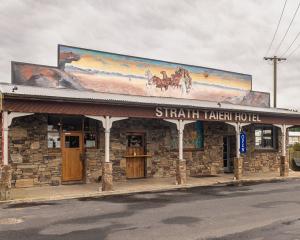
The dress, "a testimony to patching and repatching" was donated complete with a poem that told its history.
That poem describes a garment worn with pride by its owner to "church for very best, to dances and socials and all the rest".
Later it was used in stables and cowsheds, and for "rabbiting, gardening and milking too".
Ms Urbano said there was "nothing special" about the old handmade dress made in the 1920s of Britway fabric, "a kind of utilitarian cotton".
"We don’t know who donated this to the museum.
"I just love the way that you can see all the details, it’s just stitched and restitched and it’s just a testament to how things used to be back in the day."
The Catlins at the time was a remote area, and there was neither time nor a way to access new things.
Instead, people had to wait until goods were delivered, and that could take a long time.
Things were not thrown away, as happens today, instead they were reused and repurposed.
"Now, people are rethinking consumerism as being detrimental to the environment.
"That is why this is a really important piece to display."













